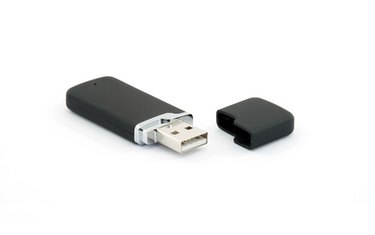
The command-line software application "dd" is a "raw write" data manipulation program. It reads and writes data more directly than most other methods. This makes dd potentially more powerful, but also more risky to use, since catastrophic, data-destroying mistakes are just a typo away.
Step 1
Log into the computer using an administrator-level account.
Video of the Day
Step 2
Insert a USB stick into a USB port on the computer. Remove all other removable drives, USB or otherwise.
Step 3
Open "My Computer" (or "Computer" in Windows Vista and Windows 7) and right click on the USB stick's icon, then select "Format" from the menu. Double-check that you have selected the correct drive, as this operation will erase all data on the drive. Leave all options on their defaults and click "Start." Click "OK" on the message box after the format is complete.
Step 4
Open Windows Explorer and navigate to the location of your bootable disk image. Move the bootable disk image file to the same directory as the dd executable file.
Step 5
Open a command window.
Step 6
Type, without quotation marks, "cd [Path]" where [Path] is the path to the directory that contains dd.exe and the disk image file and press enter.
Step 7
Type "ren dd.exe dd-removeable.exe" without quotation marks and press "Enter." This will restrict dd to removable drive types, such as USB drives, to prevent accidents.
Step 8
Type "dd --list" without quotation marks and press "Enter."
Step 9
Look in the list for where it says "removeable media." Below that line it will say something like "Mounted on .\d:". The letter at the end, in this case "d," is the letter of the USB stick.
Step 10
Type "dd if=[image file name and extension] of=.[drive letter]:" without quotation marks, replacing "[image file name and extension]" with the name and extension of the image file and "[drive letter]" with the letter of the USB stick, and press "enter."
Video of the Day